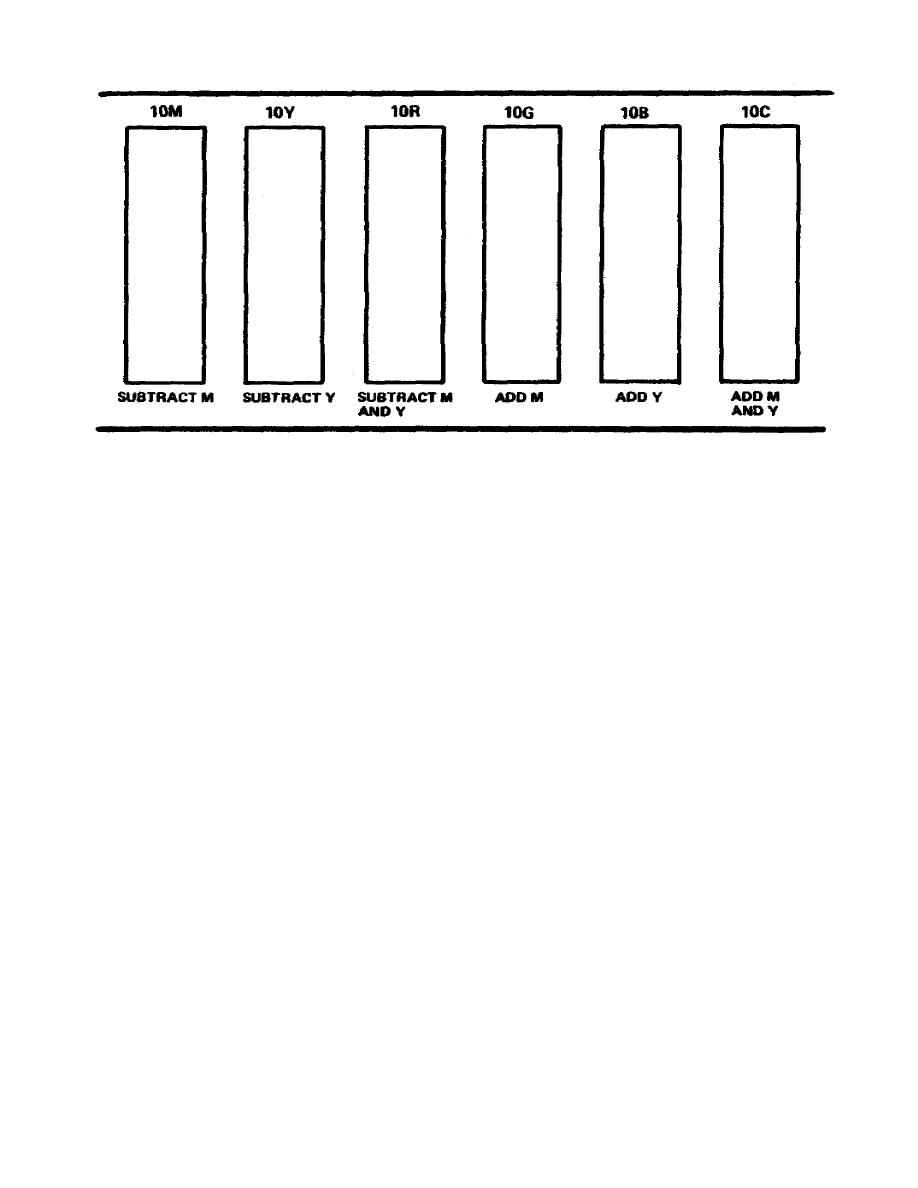
Figure 3-1. Typical color print viewer
(2) By viewing the print through the various filters, you can see what adjustments to the filter
pack are required.
b. The densitometric method of evaluation can be performed either on or off the enlarger. It
removes all the guesswork in determining printing filter packs and exposure. Such evaluation can
usually produce satisfactory prints on the first try.
(1) Off-easel reflectance densitometer evaluation is based on reading the dye density of cyan,
magenta, and yellow in the print. This is done by reading the neutral area with the densitometer through
the red, green, and blue filters. It will speed up your evaluation and make your color identification
easier. This method can be set up on a production basis outside the darkroom. In such cases a
densitometer operator can furnish filter-pack information to all the darkroom technicians.
(2) On-easel evaluation requires an electronic analyzer for each printer. This proves
economical only if the time and accuracy can outweigh the initial cost of the analyzers. There are
several types of on-easel analyzers available. They vary in design, simplicity, and accuracy. The on-
easel electronic analyzer is a light meter with filters. With on-easel evaluation, you are making the
comparisons through the printing filters in the darkroom, with the lens, light source, and negative in
place. This makes it far more accurate than of-easel evaluation. This method of evaluation is the most
accurate and consistent, compared to the off-easel evaluation.
3.
Regardless of which method is used, some form of evaluation must be made on all color prints.
Many times what looks like a good print turns out to be an off-color print. This can occur when viewed
under a different light source. Make sure the print has been evaluated before sending it to the customer.
24


 Previous Page
Previous Page
